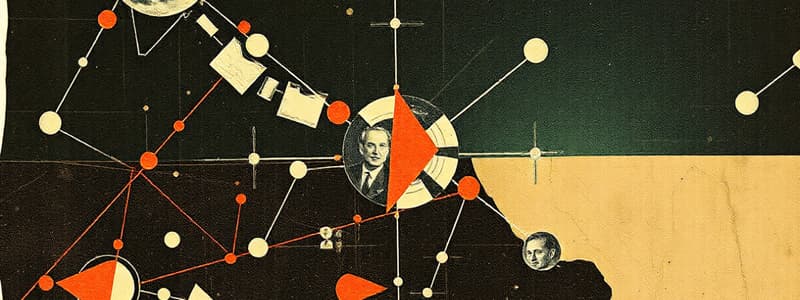Podcast
Questions and Answers
What does the atomic number represent in an atom?
What does the atomic number represent in an atom?
- The sum of protons and neutrons
- The number of protons in the nucleus (correct)
- The total number of neutrons in the nucleus
- The number of electrons surrounding the nucleus
How can the number of neutrons in an atom be calculated?
How can the number of neutrons in an atom be calculated?
- By subtracting the atomic number from the mass number (correct)
- By dividing the mass number by two
- By adding the atomic number to the number of protons
- By counting the number of electrons
Which statement accurately describes isotopes?
Which statement accurately describes isotopes?
- All isotopes of an element are radioactive
- Isotopes have the same number of protons and neutrons
- Different isotopes of the same element have different atomic numbers
- Isotopes have the same atomic number but different mass numbers (correct)
What is the mass number of an atom if it has 8 protons and 10 neutrons?
What is the mass number of an atom if it has 8 protons and 10 neutrons?
In what applications are isotopes commonly used?
In what applications are isotopes commonly used?
Flashcards
Atomic Number
Atomic Number
The number of protons in an atom's nucleus.
Number of Neutrons
Number of Neutrons
Mass number minus atomic number.
Isotopes
Isotopes
Atoms with same atomic number but different mass number.
Mass Number (Example)
Mass Number (Example)
Signup and view all the flashcards
Isotope Applications
Isotope Applications
Signup and view all the flashcards
Study Notes
Counting Protons, Neutrons, and Electrons
Atomic Number
- Definition: The atomic number is the number of protons in the nucleus of an atom.
- Symbol: Represented by the letter "Z".
- Importance:
- Determines the element's identity (e.g., hydrogen has an atomic number of 1).
- Influences the element's position in the periodic table.
Mass Number
- Definition: The mass number is the total number of protons and neutrons in an atom's nucleus.
- Calculation:
- Mass Number (A) = Number of Protons (Z) + Number of Neutrons (N).
- Importance:
- Provides information about the mass of the atom and its isotopes.
Isotopes
- Definition: Different forms of the same element that have the same number of protons but different numbers of neutrons.
- Characteristics:
- Isotopes of an element have the same atomic number but different mass numbers.
- Example: Carbon has isotopes like Carbon-12 (6 protons, 6 neutrons) and Carbon-14 (6 protons, 8 neutrons).
- Importance:
- Used in dating methods (e.g., Carbon-14 dating).
- Applications in medicine, nuclear energy, and research.
Key Relationships
- An atom is electrically neutral when the number of electrons equals the number of protons.
- The number of neutrons can be determined if the mass number and atomic number are known:
- Neutrons (N) = Mass Number (A) - Atomic Number (Z).
Studying That Suits You
Use AI to generate personalized quizzes and flashcards to suit your learning preferences.




